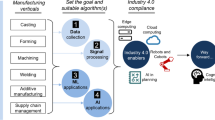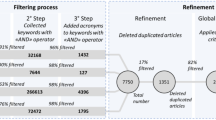Abstract
One of the primary concerns in the manufacturing of printed circuit boards (PCBs) is the definition of optimum component-insertion sequences for manual and automated operations. The problem is dynamic and multiple feasible solutions can be found. The research work described in this paper has developed a component-insertion sequencing methodology and a ‘proof-of-concept’ expert system for printed circuit boards. This system solves the component-insertion sequencing problem for semi-automated work cells which utilize a light guiding system to identify for the operator where to assemble the next component. The innovation of the methodology is the application of Artificial Intelligence and Expert Systems techniques to represent the human reasoning involved in semi-automated PCB assembly planning. Based on established assembly criteria, sequencing decision rules and data available from a CAD system, the methodology leads to optimum component-insertion sequences.
Similar content being viewed by others
References
Cavalloro, P. and Cividati, E. (1988)INCA: An expert system for process planning in PCB assembly line. IEEE, 170–4.
Contact Systems (1988)CS-400 Component Locator Programming Manual, Contact Systems, Inc., Danbury.
Cunningham, P. and Browne, J. (1986) A LISP-based heuristic scheduler for automatic insertion in electronics assembly,International Journal Production Research,24, 1395–408.
Gavett, J. W. (1965) Three heuristic rules for sequencing jobs to a single production facility.Management Science,11, 166–76.
Little, J. D., Murty, K. G., Sweeney, D. W. and Karel, C. (1963) An algorithm for the traveling salesman problem.Operations Research,11, 972–89.
Onari, H., Kobayashi, A. H. and Takahashi, S. (1988)Computer Aided Process Planning for Flexible Assembly of Printed Circuit Boards. Hitachi, Ltd, Japan
Parker, R. G. and Rardin, R. L. (1980) The traveling salesman problem: An update of research.Naval Research Logistic Quarterly,30, 78–107.
Taha, H. A. (1985)Operations Research: An Introduction, Macmillan Publishing Co. Inc. New York.
Tarjan, R. E. (1972) Depth First Search and Linear Graph Algorithms.SIAM Journal on Computing,1, 146–60.
Universal Instruments (1983)Universal Instrument's Blue Binder. Universal Instruments Corp., New York.
Author information
Authors and Affiliations
Rights and permissions
About this article
Cite this article
Sanchez, J.M., Priest, J.W. Optimal component-insertion sequenceplanning methodology for the semiautomatic assembly of printed circuit boards. J Intell Manuf 2, 177–187 (1991). https://doi.org/10.1007/BF01471364
Received:
Accepted:
Issue Date:
DOI: https://doi.org/10.1007/BF01471364




